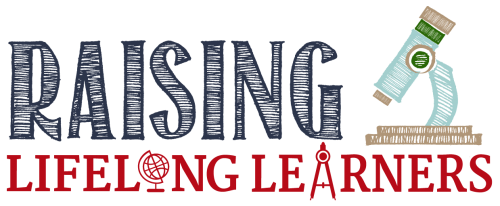Lifelong Learning
One of the greatest blessings of this homeschooling journey has been finding ways to encourage a love of learning in my children. The best way I’ve found to foster that love is to tailor our “curriculum” to my kids’ individual learning styles and interests. This can be a challenge — but finding new topics and ways to teach encourages me to continue my quest for lifelong learning… and isn’t that what it’s all about?
So… what works for us right now, may not be the same thing that works for us tomorrow, and there’s a good chance that it may never work for you.
The Kessler kids are very social, like to move, have super-short attention spans, and enjoy working together. I try to incorporate those traits into our learning. In addition to the curriculum programs listed below, we do lapbooks, go on lots of field trips (some are even related to current topics we’re studying!), take classes at museums, participate in a local geography club, a co-op, and several fun groups around town, and we use workboxes to organize our home workload.
| Hanging out together on the observation deck of the Goodtime III.
Field Trip: Bridges of the Cuyahoga River |
Trevor has specific needs that sometimes make learning a challenge. He is gifted, has ADHD with marked impulsivity, and struggles with some sensory processing difficulties. Twice-Exceptional kids can be tough because their abilties can mask their disabilities — and vice versa.
Molly, while five years younger than her big brother, is highly gifted — and highly motivated. She insists on doing “real work,” and keeps up in most areas cognitively, but is still only four years old fine-motor wise.
Logan is our two year old tornado — and alternates between sweetly working on tot-school activities and tearing up the school room. We’ll see soon enough where she falls on the educational spectrum. Right now she’s busy keeping everything real and entertaining us in the bargain.
We do much of our work together because Trevor and Molly like it that way, and I like the camaraderie it builds.
Together we use:
- Galloping the Globe by Loree Pettit (This is a spine for us… we use it to roughly order our learning. Focusing on a continent, then a country, we pull read-alouds, science activities, writing prompts and tasks, and other projects — including a fun dinner out at the end of each topic! We incorporate lapbooking and more into this program.)
- Mystery of History by Linda Lacour Hobar (My kids LOVE the conversational-style of the lessons in this program and often ask to do more lessons than I had planned. It’s fun, engaging, and I like that it is a chronological history of the world that begins with Creation and doesn’t separate biblical history from world history. The kids think it’s cool that the “stories” they’ve heard in church and PSR are full of “real” people.)
- We Choose Virtues (This is a really cute and engaging values program. My husband has begun using the catch-phrases and characters in his first-grade classroom.)
Trevor uses:
- All About Spelling
- Math Mammoth (Light Blue Series)
- Handwriting Without Tears (Cursive)
Molly uses:
- All About Spelling
- Raising Rock Stars Preschool
- Letter of the Week K4 Program
- Various sight word and phonics readers
Logan uses:
- Raising Rock Stars Preschool (in a VERY limited way)
- Letter of the Week
- Various Tot-School and Tot-Tray activities from around the web
All of the kids’ individual work is organized in workboxes (or our own rendition of them), and we have a Bible Study time together at the table during one of our breaks. Bible Study varies day-to-day for us. Sometimes we use the Raising Rock Stars verse as a jumping off point, other times we focus on our We Choose Virtues verse of the week, or the kids may work on their individual devotionals. Sometimes we just pray together and work on a service project for someone. Bible time, to us, is about drawing closer to God in whatever way feels right on that day. But we make sure it’s a part of every day… even if math is not.
